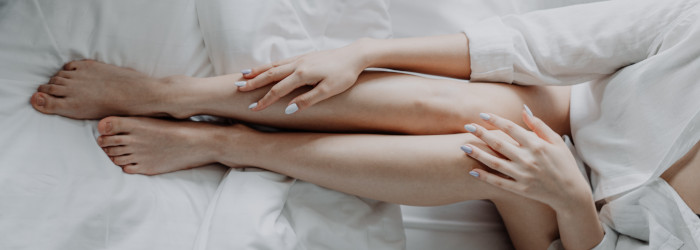
What is microscelerotherapy?
Microsclerotherapy is a popular procedure used for the removal of surface veins and spider veins. Vein specialists regard this treatment as the most effective method of managing thread veins on the legs. Sclerotherapy is carried out by experienced clinical nurse specialists with considerable knowledge of the technique. At the Skyn Gym, Clinical Nurse Specialist Kate has 20 years’ experience in treating veins by sclerotherapy.
Preparation for the treatment
The legs should be clean with no moisturisers or other skin preparations applied prior to treatment. Moisturisers can cause the medical compression stockings to fall down after the treatment. The legs should not be shaved for three days before or after a treatment session in order to minimise damage to the skin. It is best to come wearing a pair of trousers or long skirt to cover your legs and the stockings which will be applied after the treatment.
What can I expect during treatment?
A sclerosing solution (Sclerovein®) is injected into the veins using an extremely fine needle. This sclerosing solution has an irritant effect on the lining of the veins causing the walls of the veins to stick together. Blood stops flowing through the veins and they are absorbed by the body’s natural healing mechanisms over a period of three months. The blood is then directed back to the deeper venous system.
What happens post-treatment?
At the end of the session, you should put on a pair of class 2 medical compression hold up stockings. Male patients may wear medical compression stockings or bandages. These should be worn for 3-7 days following each treatment session, however they can be removed at night and for showers. Typically, 4-8 sessions of sclerotherapy are required depending upon the extent of the veins. Sessions take place at intervals of two weeks or more. You will be able to drive after each treatment session and normal exercise can be resumed.
What to expect following treatment
Bruising appears in some treated veins and can last between two weeks and, in extreme cases, up to three months, depending on the size of the blood vessels that have been treated. The duration of bruising varies greatly from person to person. We can sometimes improve the appearance by pricking the treated veins with a needle and removing the bruise. The vessels can feel tender for a few days and mild analgesia such as Nurofen or paracetamol can be taken if required.
Complications following treatment
Certain areas are susceptible to swelling, particularly the ankle and knee areas. This settles spontaneously. Occasionally the thicker bruises in larger veins, which can remain for a few months, may cause brown discolouration of the skin. It is possible for larger vessels to develop a small degree of thrombophlebitis where the vessel can feel hard, warm and a little sore. These resolve spontaneously, and only simple analgesia is required.
